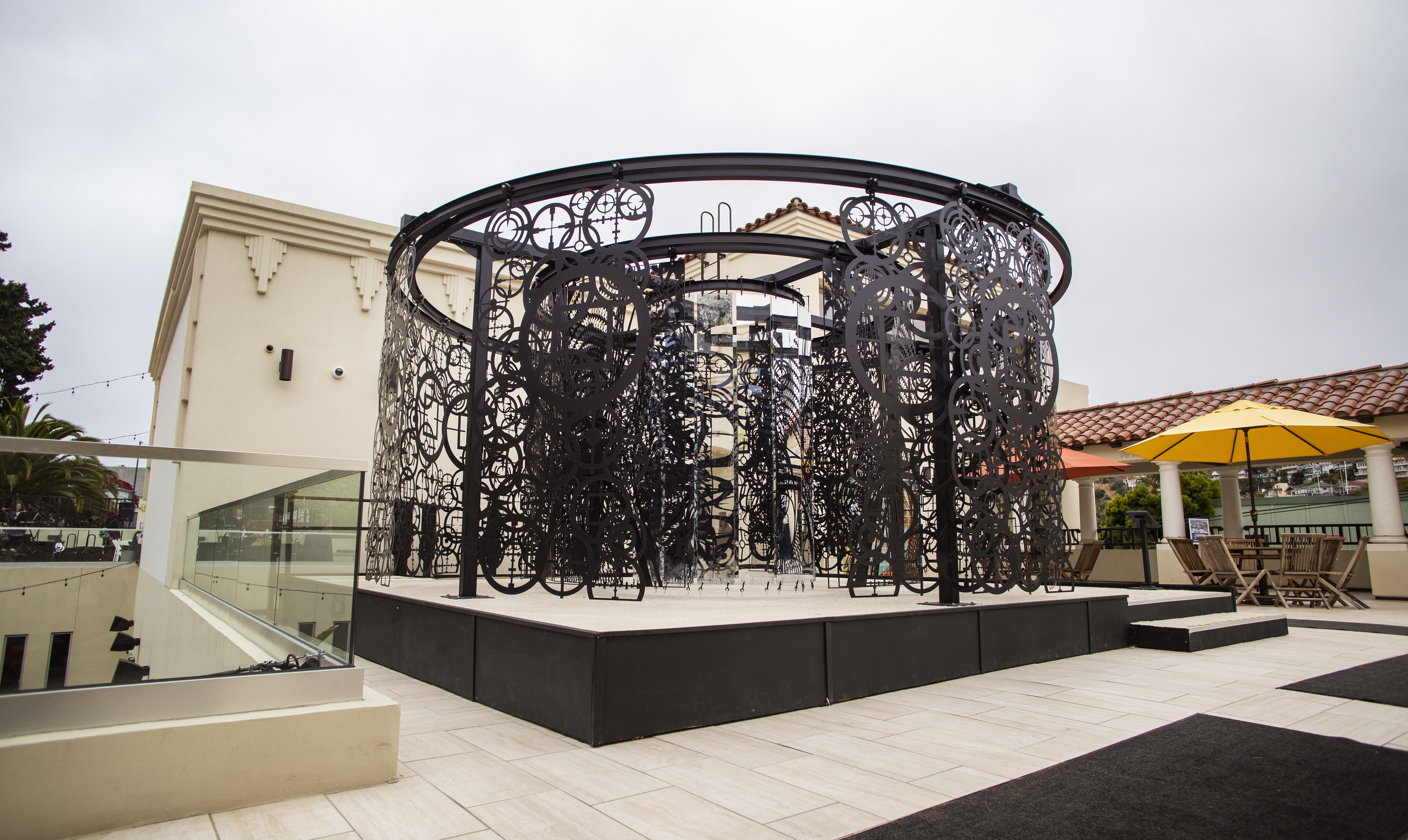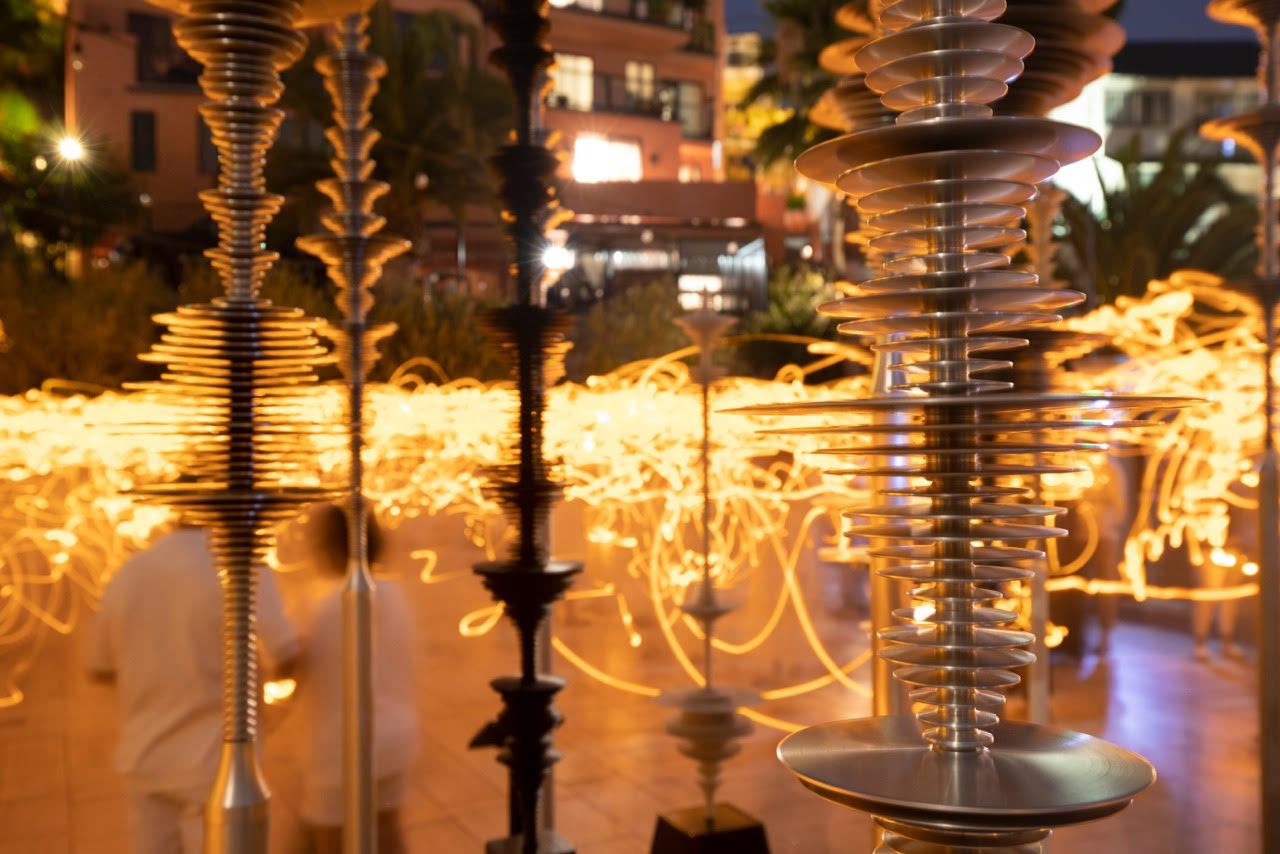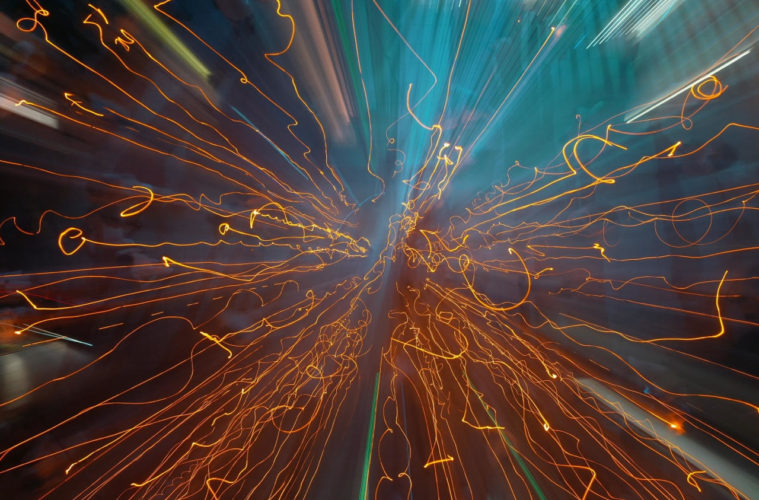Internationally renowned Orange County-based artist Elizabeth Turk began working on the “Tipping Point” project in the Fall of 2018 during a month-long open studio/live exhibition “ThinkLab LIVE .002,” at the Frank M. Doyle Arts Pavilion at Orange Coast College. In this next iteration of the project, Turk has created an evocative experience at the Catalina Island Museum, “ThinkLab LIVE .003: Tipping Point.” Remaining on view through March 2020 with three core elements, Elizabeth Turk engages visitors in a variety of ways to consider the environment in abstract terms with evocative visual expression addressing ideas of extinction, preservation and our role as humans in our planet’s future.
Made up of three elements – the installation of Migration Patterns, the sculptures Echoes of Extinction, and an interactive performance at the opening event Are We Creating a Silence? – Tipping Point” is an artwork created to open up a dialogue on these sensitive issues without drawing conclusions for the visitors. Instead of explaining the concept through words and statements, Tipping Point provides us with relics of lives lived through a multitude of media, to help us draw our own feelings and thoughts on what has happened, what is happening now, and what is yet to be.

Tipping Point Migration Patters – Photo by Eric Stoner
The dominant visual of Tipping Point is the enormous cage-like structure, Migration Patterns, on the museum’s rooftop patio. This black metal circular structure is made using visual symbols for migration patterns, bulls-eyes and cyclical shapes. The structure is open for visitors to walk around and through. From the outside of the structure, it seems like a circular cage or a maze, but as you pass through the sliding 8’ x 4’ panels in the center of the structure, you disappear into a core made of one-way mirrors unseen from the outside.
Inside this core, you can see out, but no one can see you inside the structure from the outside. In the central core of this work, you become invisible like the extinct animals, with only your sound reverberating outward, like them. The visual experience from the outside looking in doesn’t change, others don’t notice the difference of you inside the space, but you get to experience the drastic change of being gone, if only for a moment. “You see yourself reflected around and you can see out, and people can hear you, but they can only see your feet peeking through under the panels,” Turk said.
In her time at OCC in 2018, highlighting various attributes of this continent’s birds, Turk developed a visual language to explore the concept of extinction through physical objects and experience. Inspired by the recordings of extinct birds, cataloged by the Ornithology Lab at Cornell University, Turk created stunning sculptural expressions of these sounds with Echoes of Extinction. Motivated by the visual expression of the sounds of these extinct birds, she made these two-dimensional designs into three-dimensional columns or totems. Placed vertically instead of a horizontally in a gathering, they resemble a forest of trees or a graveyard of tombstones for these extinct creatures forever encapsulated in these metal and wooden expressions of their unique voices. Each object seems to glow with light and shadow and vibrate with the energy of the animal it belonged to. With added scannable QR codes at each “Sound Column,” visitors can scan the code and listen to the sounds of these extinct and endangered animals.

Light Messaging in the Forest – Photo by Brett Hilliard
“It’s like a field or a forest,” Turk explained. “So, what you see are sounds by birds, and then inspired by the island we’ve thrown in two whales and a porpoise. And we started to move towards not just extinct but endangered animals or mammals as the sea provides – but things that don’t have the same boundaries that we do. All the birds were from this continent. So that’s sort of another look at territory and boundary as well.”
With eight different animals represented in various columns – including the Bald Eagle and the Brown Pelican – with some repeating, visitors get a real sense of entire species that had lived before now and are no longer here, further echoing the disappearance in the Migration Patterns installation and promoting learning and the construction of memory and time on this planet. “That was why the San Diego Zoo person was there because I wanted to drive the idea of inspiration from what’s real,” Turk said.
“I incorporated all these different ways to dance around that paradox,” Turk continues. “These sounds that are no longer here are made physical for people. And then in the installation, you’re here but you disappear and all you can hear is the sound. And the same with the dancing prompt at the opening.”
At the opening event for Tipping Point, on July 13, 2019 at the Catalina Island Museum, as the sun set on the island, the dancing and performative aspect began with visitors becoming active participants in the artworks themselves, in Are We Creating a Silence? As the light fades, the messages and movement of the audience is all that is left and is recorded with time-lapse. With gorgeous songs composed by Michael Mortilla singing the sounds of extinct animals, he made a soundtrack for dancers to move to, in and around the space. The relics of these people and the time they spent with Tipping Point will be displayed in a time lapse video at the museum for future visitors to watch.
Turk asked them to write “what they treasure” in the air with lights provided. “As we documented this, the dancers disappear in the images but their messaging and a relic of their movement remain, surrounded by the sound columns. I love how that field of light and movement looks.”
“The prompt for the sound was to express an extinction, to define the absence of sound with sound,” Turk explained. “So, everything was sort of balancing in that paradox of how do you create this conversation around extinction without it becoming so overwhelming that you shut down, and how do you describe what’s not there with what is.”
In 90 minutes, people were experiencing sculpture in the installation and in the sculptures of the sound columns. After that, people were guided through song and movement with the OCC Choral, a violinist, and a composer Michael Mortilla, accompanied by a dance performance by Assembly Dance Company. After all that, the audience was asked to participate by writing with light. Within these layered expressions, the audience explored that cross between the ephemeral and the eternal.
“ThinkLab LIVE .003: Tipping Point” will be on view through March 2020, Catalina Island Museum, 217 Metropole Avenue, Avalon, 90704.
Catalinamuseum.org
Advertising disclosure: We may receive compensation for some of the links in our stories. Thank you for supporting Irvine Weekly and our advertisers.

